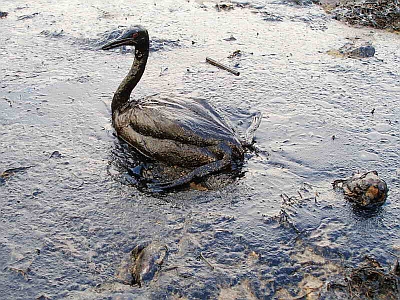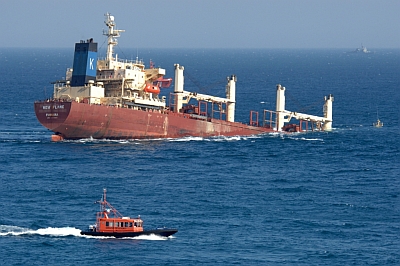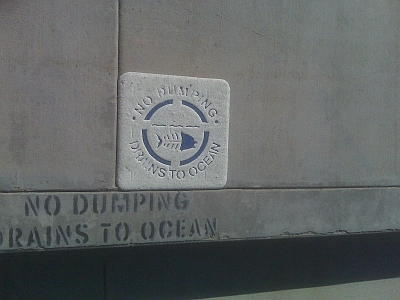2. Oil Pollution
Introduction
A large oil spill from a damaged tanker is headline news. Seabirds and seals covered in oil, black beaches, dramatic photos of clean-up and rescue show that the environmental damage can be severe. But after a few weeks the story disappears and we rarely hear what happens next.
How bad is the damage to coastal and marine ecosystems? How long does it take before the environment recovers? What lessons have been learnt from the oil-spill clean-up? Answers to these questions take time and rarely make headline news. Nor do the many small spills from minor accidents and deliberate discharges that are the main source of oil in the marine environment. Most of them go unreported and unnoticed. Yet the long-term effects of such chronic pollution may do more harm than a single large oil disaster.
It doesn't take much: a penny-size drop of oil can kill a bird!

Photo: Russian Doors / MarinePhotoBank
In this chapter you may learn
- about the different sources of oil that cause pollution in the sea
- about the behaviour and evolution of oil at sea
- about the way oil affects the marine environment
- what can be done to clean up oil spills
- which remote sensing techniques can be used to detect oil spills and to aid clean up operations
- what you can do to prevent oil pollution even if you live far away from the coast

Photo: David Parody / MarinePhotoBank
We are all responsible, no matter where we live -
Did you know that the greatest source of oil pollution in the seas is from land?
The largest amount of oil input into the sea does not originate from tanker accidents. At least half of the oil estimated to enter the sea is from land based sources! These include discharges from industry but also oil washed off streets and into storm drains after rain.

